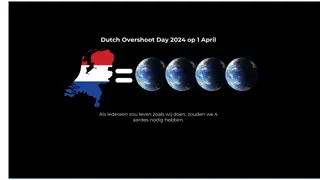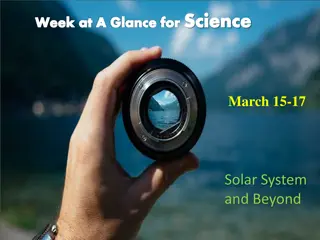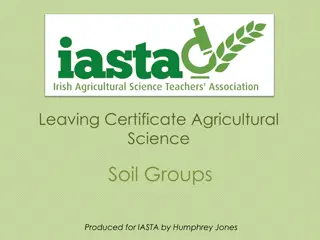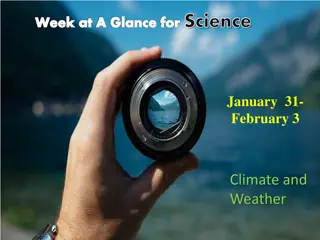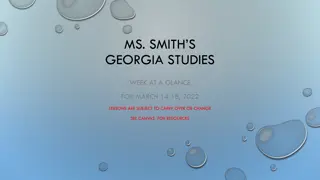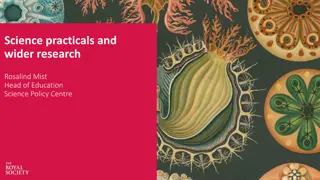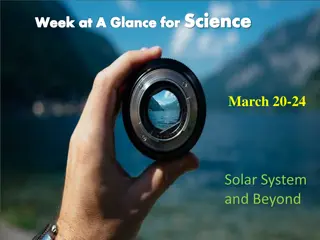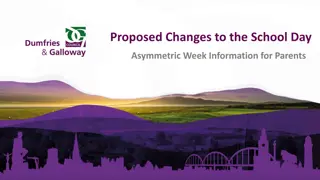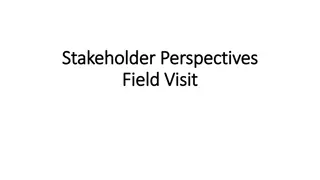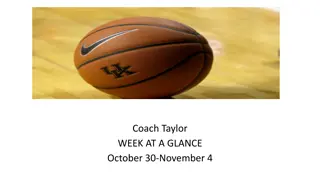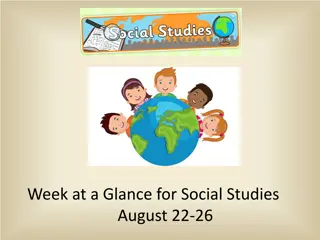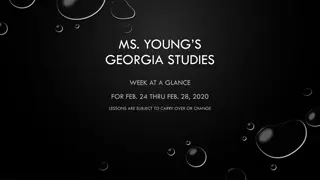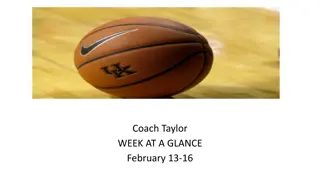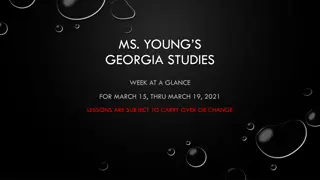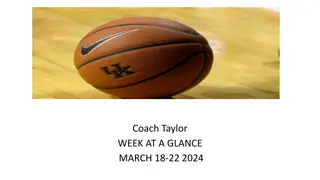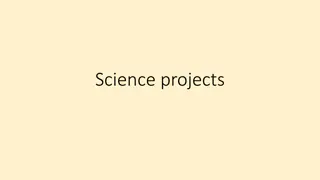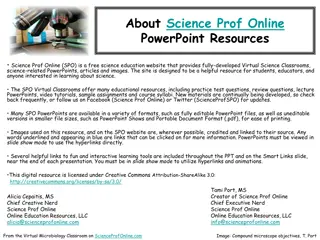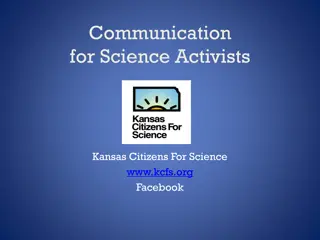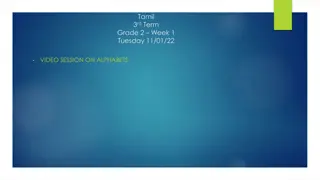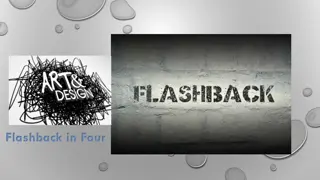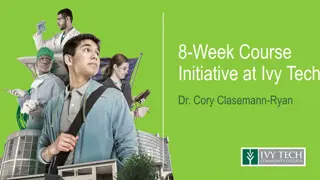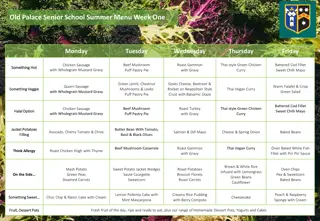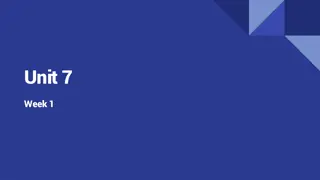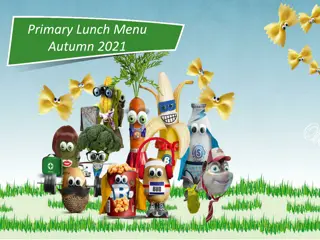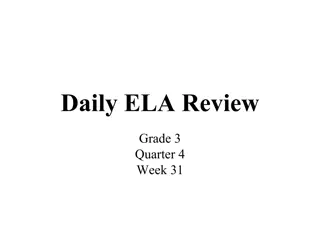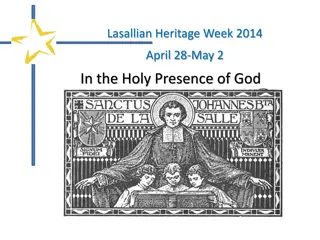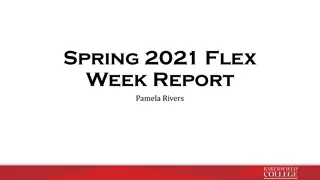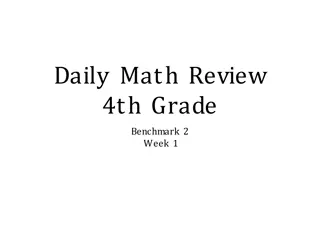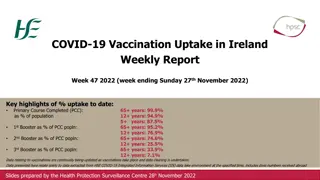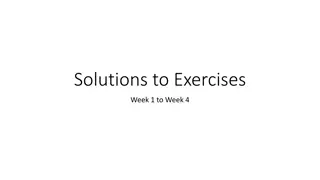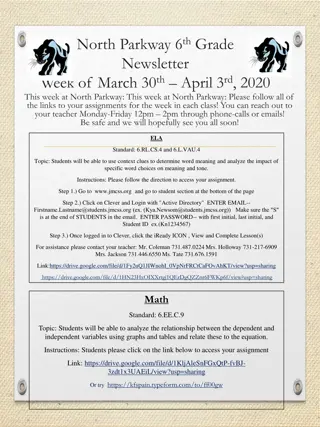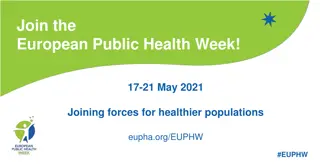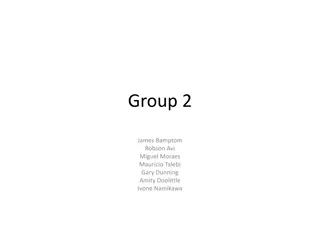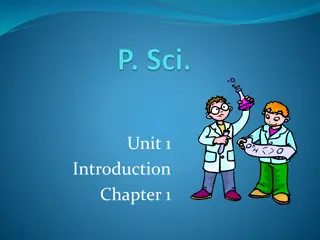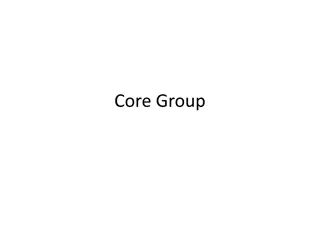Science Week at a Glance: Earth's Changing Landscape - September 5-9
Explore the dynamic processes shaping Earth's surface through a week-long science program. Dive into topics like the formation of Earth's surface, rock classification, plate tectonics, mineral characteristics, and fossil evidence of our planet's history. Engage in hands-on activities, discussions, and assessments to deepen your understanding of Earth's geology.
Download Presentation

Please find below an Image/Link to download the presentation.
The content on the website is provided AS IS for your information and personal use only. It may not be sold, licensed, or shared on other websites without obtaining consent from the author. Download presentation by click this link. If you encounter any issues during the download, it is possible that the publisher has removed the file from their server.
E N D
Presentation Transcript
Week at A Glance for Science September 5-9 Earth s Changing Landscape
S6E5. Obtain, evaluate, and communicate information to show how Earths surface is formed. a. Ask questions to compare and contrast the Earth s crust, mantle, inner and outer core, including temperature, density, thickness, and composition. c. Construct an explanation of how to classify rocks by their formation and how rocks change through geologic processes in the rock cycle. f. Construct an explanation of how the movement of lithospheric plates, called plate tectonics, can cause major geologic events such as earthquakes and volcanic eruptions. (Clarification statement: Include convergent, divergent, and transform boundaries.) Supporting Standards b. Plan and carry out an investigation of the characteristics of minerals and how minerals contribute to rock composition. g. Construct an argument using maps and data collected to support a claim of how fossils show evidence of the changing surface and climate of the Earth.
Monday, September 5 No School Labor Day
Tuesday, September 6 No School Asynchronous Day students learn from home
Wednesday, September 7 Standard: S6E5.c Construct an explanation of how to classify rocks by their formation and how rocks change through geologic processes in the rock cycle Learning Target: I can describe the rock cycle and how rocks change through geologic processes. Warm-up: The Rock Cycle Video Work Session: Earth s Layers Study Guide, Practice Rock Cycle Puzzle, Board Game Earth s Layers , Collect any missing work. Closing: TOD Reminders: All missing work is due 9/8 Quiz 9/9
Thursday, September 8 Standard: S6E5.c Construct an explanation of how to classify rocks by their formation and how rocks change through geologic processes in the rock cycle Learning Target: I can describe the rock cycle and how rocks change through geologic processes. Warm-up: Rock Cycle Puzzle; Earth s Layers Foldable Work Session: Textbook Readings ( Earth s Layers/ Rock Cycle), take notes and create Study Guide. Closing: Think-Pair-Share Reminders:
Friday, September 9 Standard: S6E5. a,c Learning Target: Investigate and engage in lab safety and lab project activity. Warm-up: Review Rock Cycle and Earth s Layers Study Guide with a partner. Work Session: Quiz Wk5; Lab Day Closing: Summarize learning targets and learning for week Reminders:
Resources for Unit 1 A What are the Layers of Earth? Layers of the Earth Layers of the Earth Geology The Good and the Beautiful Home school Science 8:47 7 Ways We Know What s Inside the Earth - SciShow 12:08 An Overview of Earth s Layers - 10:07
S6E5. Obtain, evaluate, and communicate information to show how Earths surface is formed. a. Ask questions to compare and contrast the Earth s crust, mantle, inner and outer core, including temperature, density, thickness, and composition. b. Plan and carry out an investigation of the characteristics of minerals and how minerals contribute to rock composition. c. Construct an explanation of how to classify rocks by their formation and how rocks change through geologic processes in the rock cycle. d. Ask questions to identify types of weathering, agents of erosion and transportation, and environments of deposition. (Clarification statement: Environments of deposition include deltas, barrier islands, beaches, marshes, and rivers.) e. Develop a model to demonstrate how natural processes (weathering, erosion, and deposition) and human activity change rocks and the surface of the Earth. f. Construct an explanation of how the movement of lithospheric plates, called plate tectonics, can cause major geologic events such as earthquakes and volcanic eruptions. (Clarification statement: Include convergent, divergent, and transform boundaries.) g. Construct an argument using maps and data collected to support a claim of how fossils show evidence of the changing surface and climate of the Earth. h. Plan and carry out an investigation to provide evidence that soil is composed of layers of weathered rocks and decomposed organic material.


